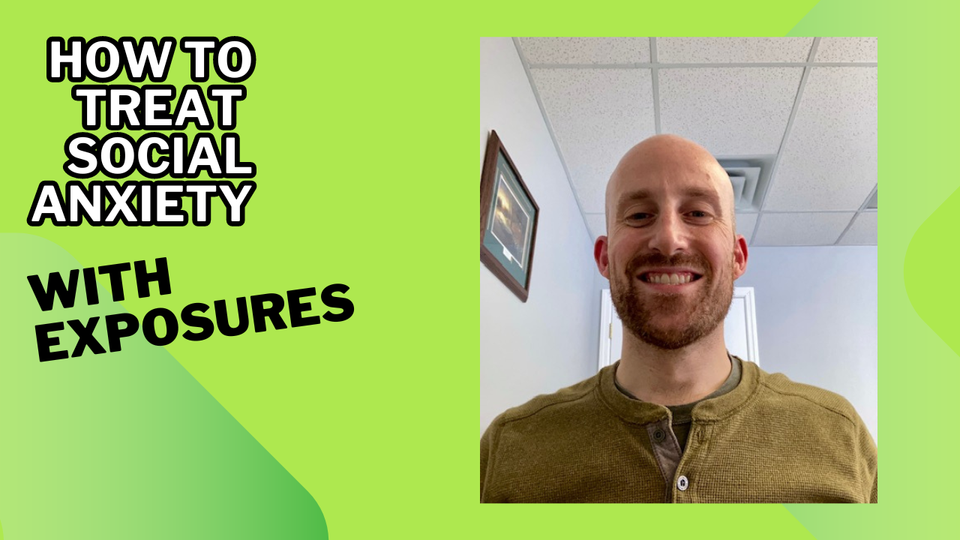How to Treat Social Anxiety With Exposure

(Below is just the transcript of the videos for those that prefer reading)
I wanted to create this blog for you guys to summarize a training that I just went through; treating Social Anxiety or Social Phobia with exposure exercises and give you guys a snapshot of what it looks like to work with me treating your social anxiety.
As far as exposure exercises and social anxiety: Social Anxiety (Social Phobia) we know is a mental health disorder with the root fear of being judged or rejected by other people. Exposure exercises is a treatment intervention where we are intentionally turning into/leaning into/facing our fears. So for treating social phobias with exposure this looks like me with my clients looking for situations where they feel like there is a high probability of feeling rejected, getting unwarranted "judgey" stares, sideways glances or eye rolls, or whatever their fear is.
Three benefits of facing your fears and doing these exposure exercises:
1.Test out new skills. For my clients, testing out these new skills might mean: initiating conversations, or practicing ending conversations and politely transitioning away or practicing what I call "social ping pong" which is asking follow up questions to further the conversation.
- Disconfirm our fears. In the I laughed out loud when I heard the trainer say, "My socially anxious clients are excellent observers and terrible interpreters." What this looks like when I do work with my clients is we intentionally go into local grocery stores or places to buy clothes where we can meet people. We practice engaging with people and seeing if we can disconfirm our fears. We practice doing the scary thing (i,e. going up and saying "hi" to people or giving people compliments, asking for help) and then we pause and turn down the next aisle and my clients and I then process. We will ask questions like, "How did that go? How did you do asking questions? How did you do being brave and vocalizing and using your voice and how did the person respond? Did they get angry? Did they give you that disgusted look? Did that act annoyed or look at their watch or look at their phone?
- We learn we can tolerate discomfort, mistakes, awkwardness. A lot of my clients will come up to me and say, "Drew, I don't know if I should talk to that person. I don't know if they want me to talk to them." and I'll say, "I don't either." Nobody goes around with sign on their chest saying, "Open for conversation, come talk to me." So we have to deal with the uncertainty, we have to learn into it and risk seeing if somebody's open or not. I always say if they are not, great, respect their boundaries, politely thank them for their time and get out of their. We also get to practice feeling awkward and learning that we can tolerate it. One of the things my clients say is "Drew, how do I those awkward pauses?" and I always say, "You can't." You have to lean lean into it (the awkwardness), you have to deal with it, you have to accept that sometimes that's just part of the getting to know new people process. When we go out and do our exposure exercises and stumble over our words, fall flat and make a bad joke and are not sure how to move forward; we get to practice sitting with the anxiety and saying, "Whoa that was uncomfortable but I made it through. The worst thing happened and I am still alive."
If Any of this sounds helpful, I encourage you guys to reach out to me to see if we would be a good match therapy because I would love to new people with their social anxiety.
